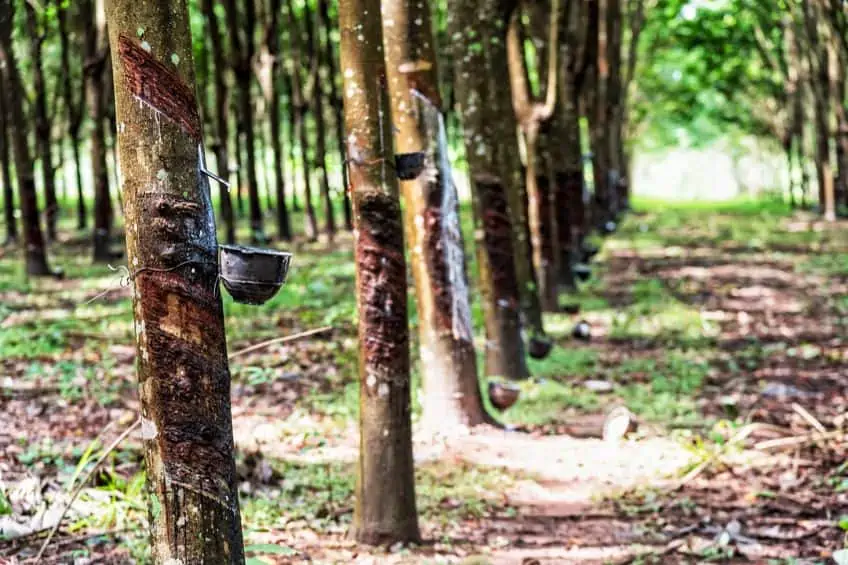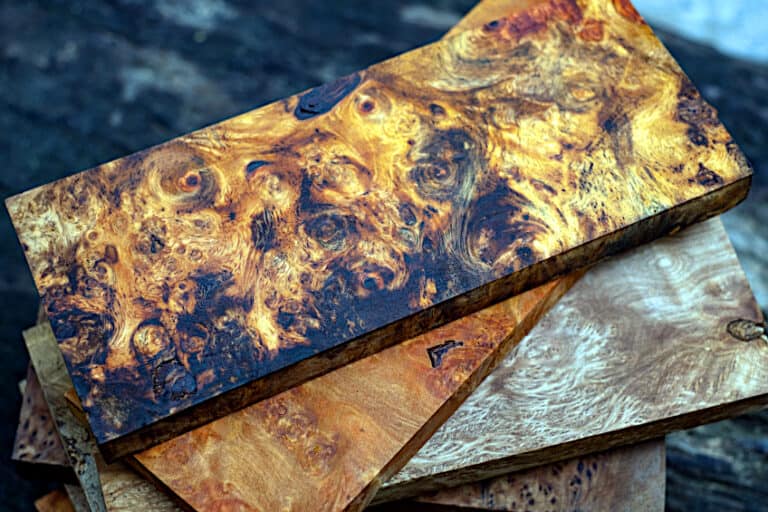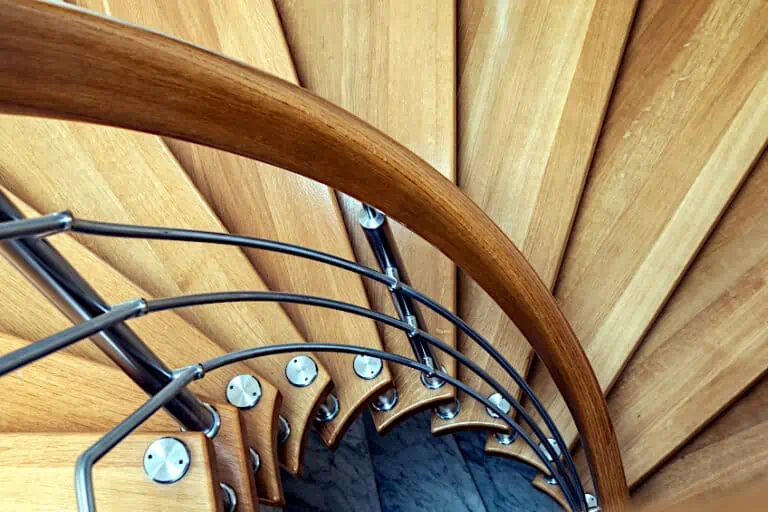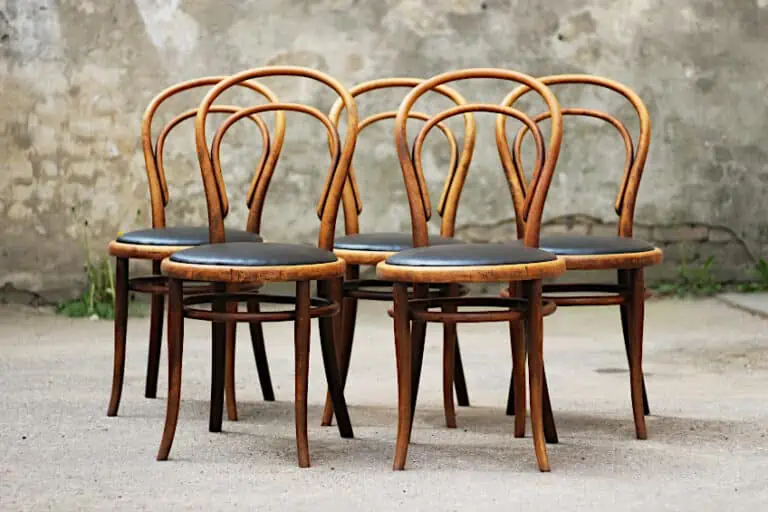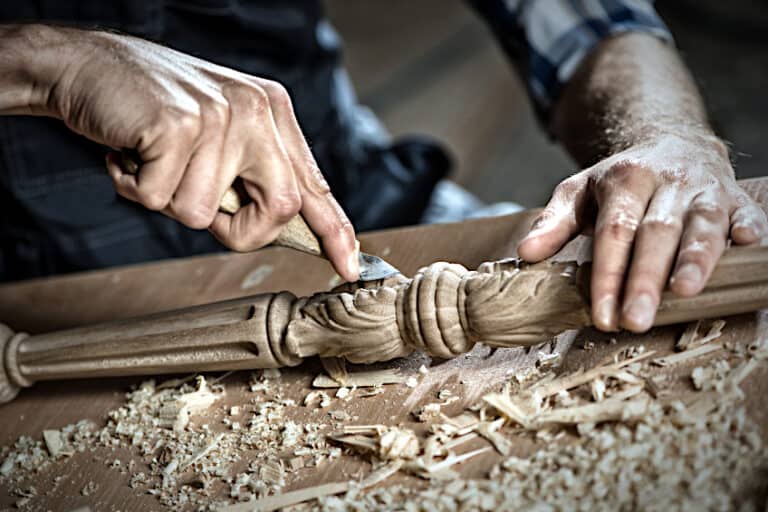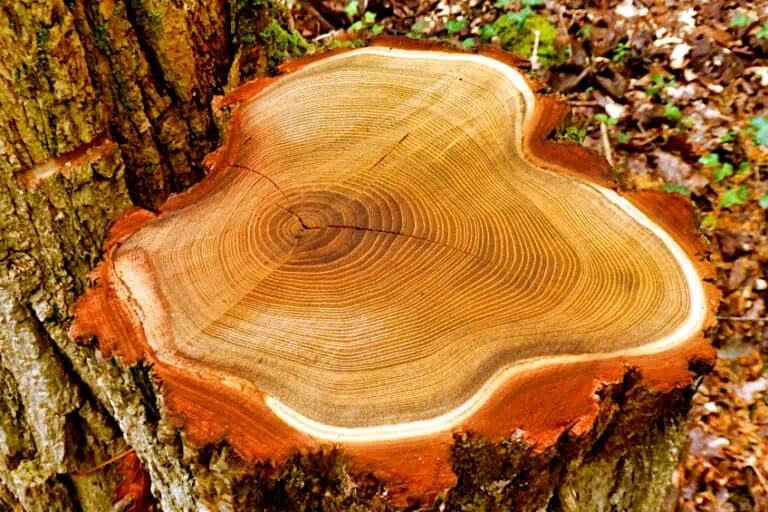What Is Rubberwood? – Exploring the Properties of Rubberwood
Wood alternatives have been taking the world by storm for the last five decades and are showing no signs of slowing down. As technology progresses, we have seen an exponential increase in the number of artificial materials available which not only replace but supersede the construction materials of old. One of the materials that have had a considerable impact on the consumption of raw materials and wood, in particular, is rubberwood, but what is rubberwood? Below we will have a look at the intricacies, applications, and functions of rubberwood, and by extension products derived from it.
Table of Contents
What is Rubberwood?
Rubberwood which is also known as parawood is a type of wood that is extracted from the rubber tree, a plant that is found in South America. Rubberwood is most coveted for a substance it secretes which forms the base for latex and by extension latex products. A rubber tree can have this latex base extracted from its trunk at around nine years of age until it reaches roughly 30 years old, after this the tree can be cut down and the rubberwood can be used for a wide variety of products such as furniture, flooring, and light construction applications.
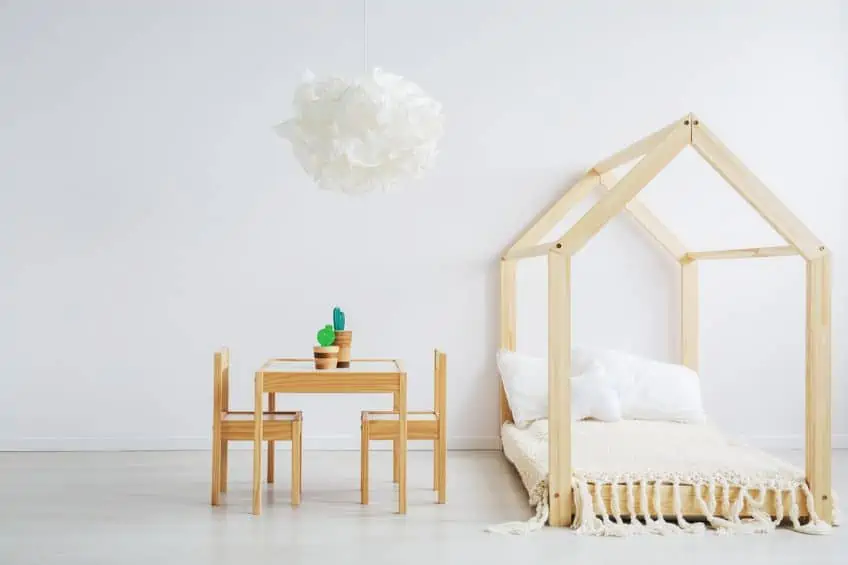
You shouldn’t judge rubberwood by its name though, rubberwood is actually classified a hardwood and shares similarities with other woods like Maplewood and Ashwood in both its grain texture, color, and density. Therefore, although it is quite malleable, it is certainly not a flimsy piece of timber you might picture in your mind’s eye and has a serviceable tensile strength as well as durability. As we mentioned previously rubberwood is one of the best woods you could choose if you are interested in furniture design. While it doesn’t naturally possess a strong aversion to the elements, it can be used for outdoor applications once it has been treated.
There are many common household and outdoor furniture items that can be made from rubberwood, such as desks, chairs, dining room tables, storage chests, spice racks, and even entire kitchen countertops.
The reason many people choose rubberwood over conventional wood furnishings is that it is extremely versatile and marginally cheaper than other woods available on the market today, not to mention the fact that it has a naturally appealing soft color tone which pairs beautifully with most large spaces to create an inviting and welcoming feeling to your home.
The Rubberwood Tree Overview
| Botanical name:
| Hevea brasiliensis.
|
| Classification:
| Hardwood variant.
|
| Place of Origin:
| South America ( Amazon, Brazi, Peru).
|
| Properties: | · Contains latex. · Grown in tropical climates. · High tensile strength. · Serviceable load-bearing abilities. · Strong aversion to cold conditions. · Requires large amounts of water for sustenance. |
Is Rubber Wood Considered to be Wood?
Although its name would suggest otherwise rubberwood is in fact what most of us would characterize as real wood. The metric most of us use to determine whether a material is considered real wood or not is by asking whether it is created from wood particles or simply solid timber. Well, the good news is that rubberwood is in fact sold wood which means it passes our stringent “solids only” policy for being “real” wood.
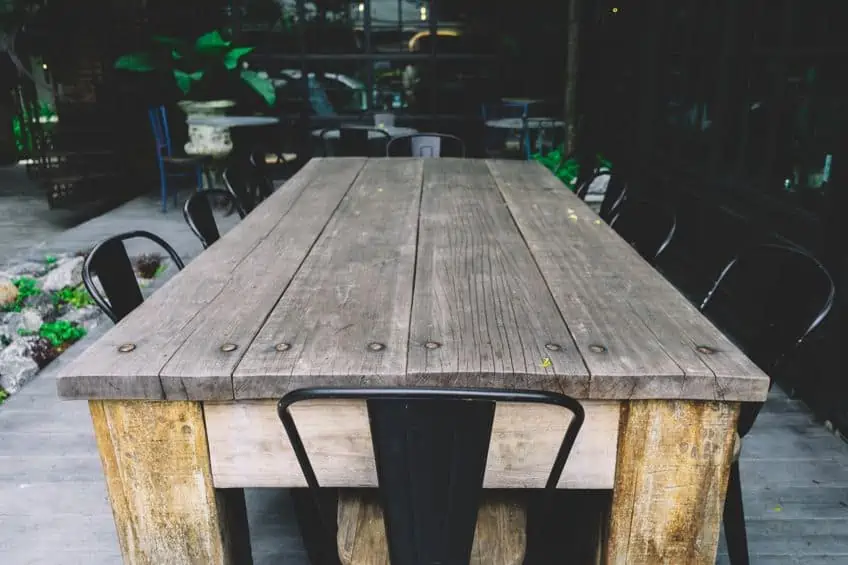
Rubberwood does have a few properties that set it apart from more commonly used woods such as oak and maple, for instance, the latex which is extracted from the tree does stay inside the wood for the duration of its lifespan, giving it unique graining, color, and impact absorption which is uncommon among other woods in the hardwood class making them quite brittle once they have gone through their drying and/hardening process. In retrospect, this type of wood could have been named more considerately given all the misconceptions some may have of it, although considering it is derived from a tree that produces latex this is understandable.
If you still are not completely convinced that rubberwood is genuine hardwood, simply have a look at how rubberwood furniture has skyrocketed in popularity in recent years and how indistinguishable it is from other hardwoods at first glance.
If you think that rubberwood is a cheap imitation that will have you watching your furniture fall apart as soon as you bring it home, you will be quite surprised to know that rubberwood furniture has of tensile strength of 9500 PSI which is more than enough to comfortably support five full-grown adults at any given time. Rubberwood’s name certainly does not do it any favors in the way of marketability but it more than makes up for this by simply being a good, ecologically friendly wood with versatile applications and a supreme lifespan.
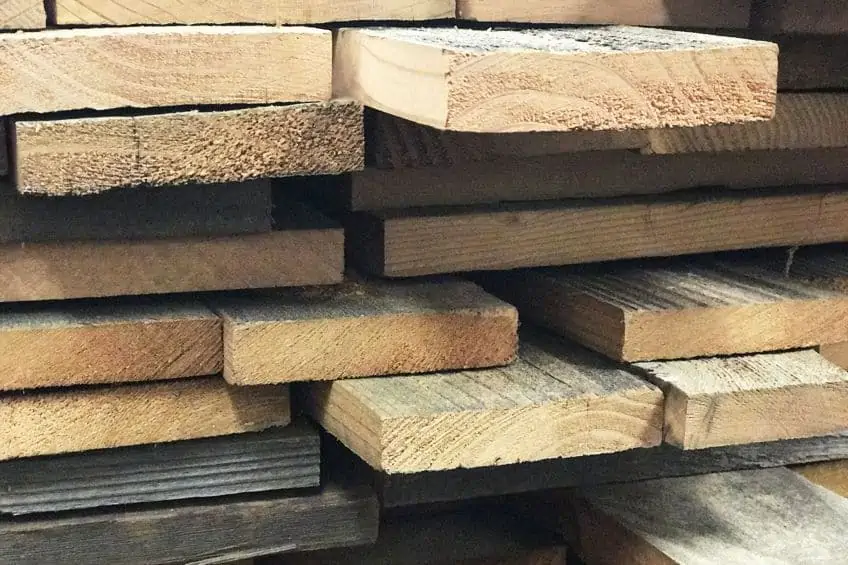
The uses for rubberwood don’t end there though, because although it is typically used in its solid form, rubberwood particles can be integrated into particleboard and other engineered woods to provide them with some of the characteristics we mentioned previously. Considering that rubberwood is already an impressive construction material when used on its own, the properties you can give a workpiece designed with rubberwood integrated into it, or engineered wood containing rubberwood particles, are incredible.
Some of the lesser-known qualities of rubberwood are its heat resistance and shock-absorbing qualities.
Yes, rubberwood is naturally resistant to heat and open flames, which means that you can use rubberwood in applications where open flames are present, or design furnishings without having to worry about the added expense of adding a flame-resistant coating. Its shock-absorbing qualities are attributed to the trace amounts of latex in the wood’s grain which remain even after the wood has been processed and cut.
What Is Rubber Wood Used for?
This type of wood has many qualities that a large number of industries consider to be valuable, therefore it is no surprise that rubberwood is used to manufacture several different products spanning a wide variety of industries worldwide. This being said, let us have a look at some of the applications this hardwood is used in.
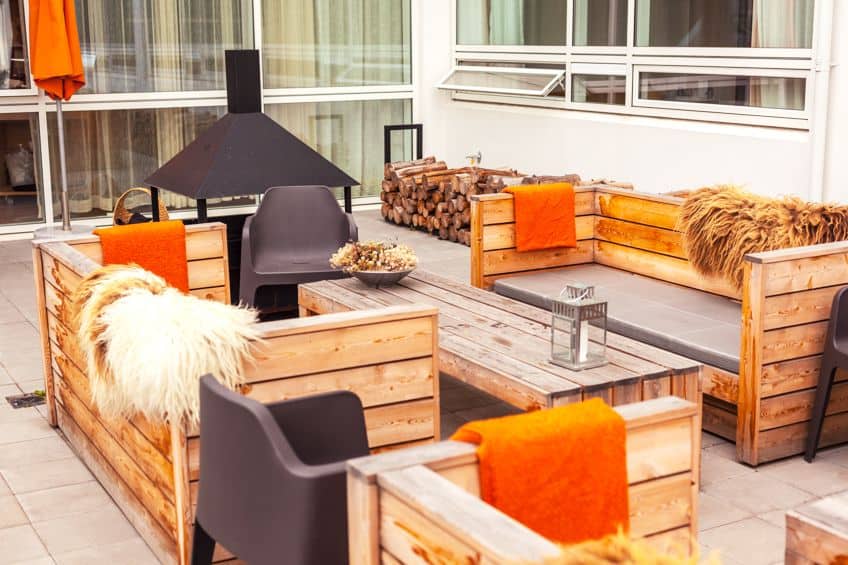
Furniture
Rubberwood can be used to make an assortment of furnishings from tables, to chairs, to kitchen countertops. The reason it is so widely used is that it can be easily manipulated, and the grain is simple compared to other hardwoods. This means that its resistance to cutting tools and its malleability during the production process is ideal for making things such as tables or chairs without having to heat or compress the wood the same way you would have to with other hardwood variants.
This also means that cutting intricate shapes such as boutique furniture is made easy as you will not have to fight the grain to achieve your desired shape.
Flooring
Rubberwood flooring has become quite popular due to its affordability, aesthetic appeal, durability, and feel. Although it is more commonly used for this purpose in south American and east Asian countries, it is possible to attain rubberwood flooring near you due to its dramatic increase in popularity in recent years. Rubberwood flooring is extremely durable and will typically last for a long time if it is cared for properly.

Rubberwood flooring is also quite soft due to the remaining latex base found in the wood’s grain, which means flooring has a good balance between flexibility and rigidity compared to other hardwoods and engineered hardwoods. Rubberwood flooring is also low maintenance which means you would have to resurface it as often as you would with conventional hardwood flooring such as oak, and in addition to this, it also has an appealing natural color that closely resembles maple which fits perfectly with bedrooms and living rooms.
Beds
You probably won’t be surprised to know that rubberwood is commonly used in the manufacturing of beds. Everything from queen-sized beds to bunks beds can be made from this material and considering its rigidity to flexibility ratio this is understandable. While having the structural integrity to support two people comfortably, it also provides enough flexibility underweight to ensure that your mattress springs last for a few more years as it won’t be taking up all the strain of you laying on it every night.
This being said, it can be used in the design of not only the bed frame but it can also be used to design intricately carved headboards and bedside tables that will last you a lifetime.
If you are interested in getting your hands on some rubberwood and would like to try your hand in using it for crafting purposes for a more customizable bed design, there are loads of tutorials available on YouTube. These will walk you through some of the finer details, although we think you will find it an absolute please to work with.
Crafting
Should you find yourself wanting to use hardwood for general-purpose crafting you will not be disappointed. More often than not when designing things such as small wooden cabinets or dressing tables you could find that compressed wood or engineered wood is hard to work with, especially in smaller pieces to create legs and stumps. Fortunately, when using rubberwood for these purposes you will not have this issue due to its simple grain which will not resist your cutting tools, in addition to this because of its flexibility and rubberwood hardness, you will have the perfect material for small scale loadbearing purposes.
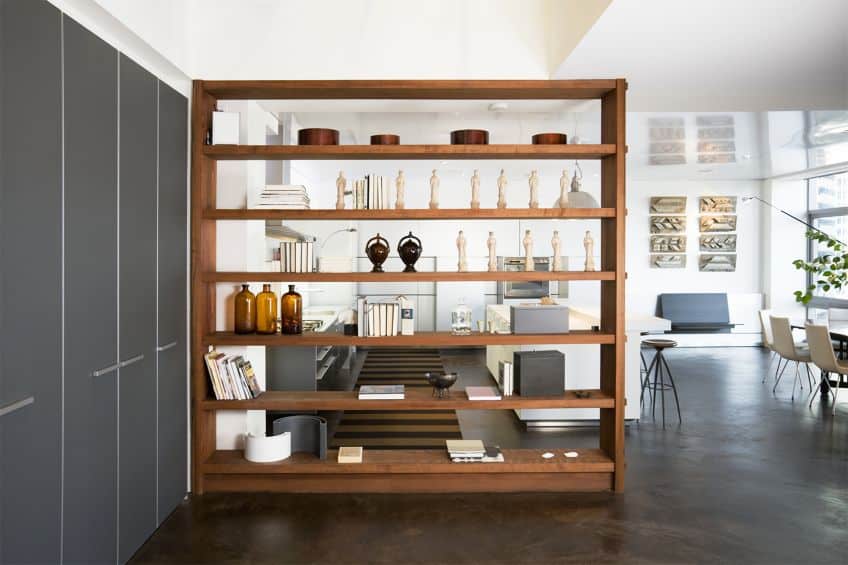
Furthermore, it can also be used for things such as boutique shelving, especially if you are putting together an unconventionally shaped shelving unit. While other hardwoods tend to chip and break when being worked in small portions you will find that using things like wood adhesives, nails and staples is much easier when working with rubberwood. Rubberwood also takes to finishes quite well as it absorbs additives and paint coating quite well compared to other hardwoods in its class.
What Are the Pros and Cons of Using Rubberwood For Furniture?
If all woods were made perfect you probably would not be reading this, and just like other hardwoods and engineered hardwoods, rubberwood does have its shortcomings under certain conditions. This being said, let’s have a look at some of the advantages and disadvantages of using rubberwood for furniture.
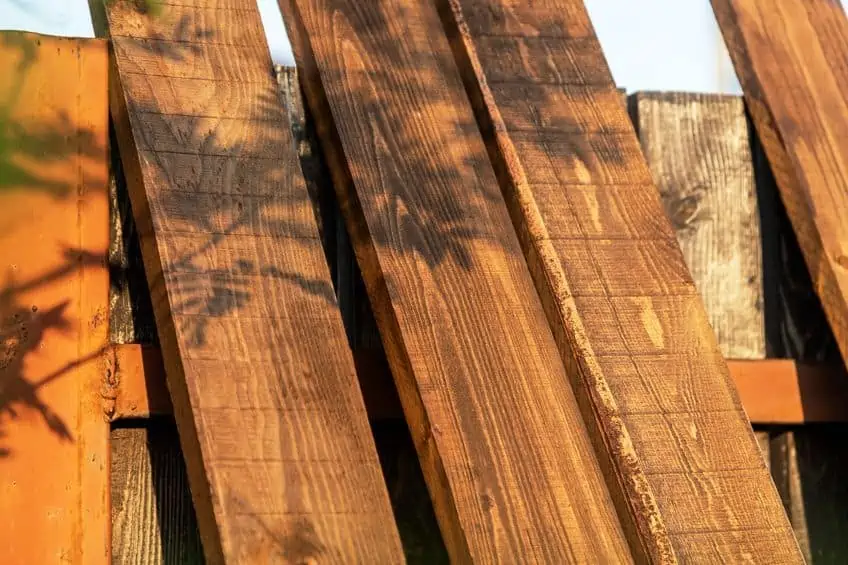
Pros
There are many advantages to using rubberwood for furniture design as we covered previously. We will discuss these pros in more detail below, but here is a shortlist of the best properties of rubberwood.
- Longevity
- Affordability
- Malleability
- Customizability
Affordability
Rubberwood is also extremely cheap compared to other hardwoods due to it not being the primary resource in its life cycle. Because rubber tree wood is essentially used to extract the latex base which can be found in its core, the wood that is then leftover is considered a by-product of this process and can be sold relatively cheaply.
This is why furnishings that are made of rubberwood can be purchased marginally cheaper than those made of conventional hardwood.
Customizability
This type of wood is also highly customizable much like engineered woods. Although you should note that, unlike engineered woods that can only be stained and coated on the surface layer, rubberwood can be treated and coated in its entirety. It is also worth mentioning that hardwood takes impressively well to staining and varnishing compared to other woods in its class, making it a good wood for many professional craftsmen and weekend warriors alike.
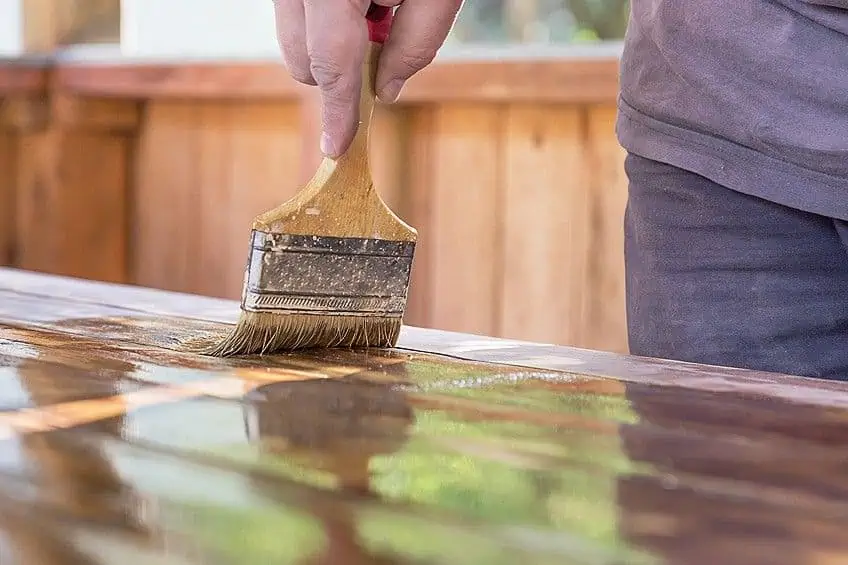
Malleability
Another advantage to working with this hardwood is that it can be manipulated quite easily. Rubberwood is very malleable and therefore it can be cut and scratched quite easily, this also means that should you be working with large or small pieces of this material you can easily cut through it by hand or with a powered cutter.
This is largely thanks to the simplistic grain that rubberwood is so well known for, as it provides virtually no resistance when cutting.
Longevity
One of the main advantages is that rubberwood is extremely long-lasting. Compared to conventional hardwoods rubberwood can extend the lifespan of your furniture anywhere between 15 to 25 years at a time. This comes as no surprise considering how flexible this wood is on a molecular level and the tensile strength that comes with it.
Cons
Rubberwood is not by any means a perfects material, there are several constraints you should consider before choosing rubberwood for your next project. The list below outlines some of the disadvantages of rubberwood.
- Warping
- Latex allergies
- Moisture resistance
- Sourcing difficulties
Latex Allergies
Lots of woods contain spores and microbes which can trigger allergic reactions in those who work with them, this Is especially apparent during the cutting and drying process where these spores are likely to be released from inside the wood you are working with. Rubberwood can have a particularly nasty surprise for those with latex allergies as it still contains latex residue inside little pockets in the slats or raw stump.
This type of allergy is pretty common, so if you have an aversion to latex this type of wood might not be the best choice for you.
Warping
One of the things you should keep in mind is that rubberwood tends to warp quite a bit in the drying process simply due to its molecular structure, as well as the residual presence of latex in its grain. The common workaround for this problem is using a kiln to dry the wood out, ensuring that instead of direct heat a thermal current is circulated around the wood drying out the individual slats, but this device is not easily accessible and can be expensive in certain states.
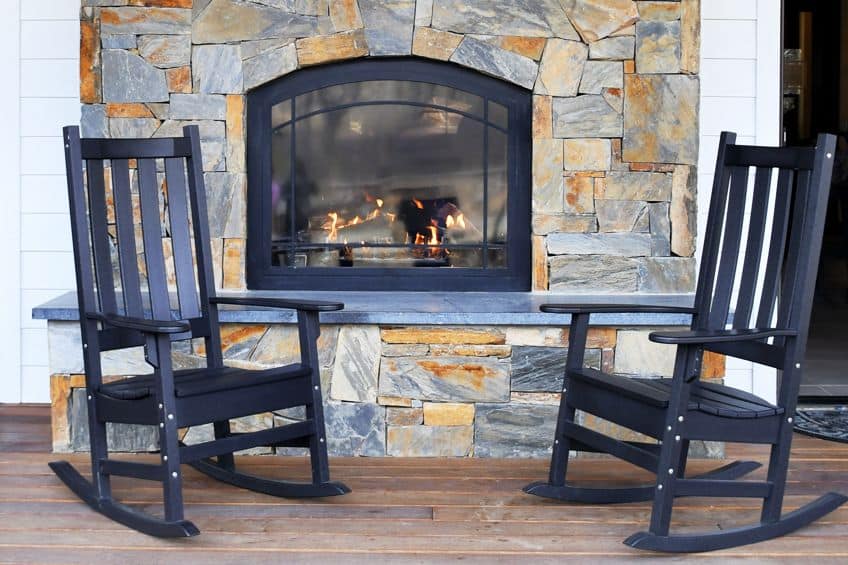
Should you intended to rubber tree wood for your kitchen countertop or perhaps a nice rocking chair near your fireplace since it is fire resistant you might want to reconsider. Although rubberwood does not burn easily and can take a while to char over when in direct contact with an open flame, it does warp easily if the appropriate coatings are not applied to it. This being said, if you are going to be using a rubberwood table close to a woodfire oven, for instance, it is best to get it coated for heat protection beforehand to avoid needing to replace the entire table.
Sourcing Difficulties
One particular disadvantage you will have in the United States is that rubberwood is often imported or sold as finished products. The reason for this is because rubberwood is difficult to import in the form of raw material due to the fact that it is almost exclusively grown in South America, so finding unrefined rubberwood can be near impossible if you don’t know where to look.
You can work around this issue by asking your wood supplier to order rubberwood for you, although this may end up being more costly than you initially anticipated.
Moisture Resistance
Lastly, if you are considering using rubberwood for outdoor furniture or create a deck for your front lawn, you might want to consider other solid wood alternatives if you live in a rainy state. Some rubberwood furniture disadvantages include an aversion to moisture, even when treated with epoxy or laminate. Rubberwood does not like to be cleaned chemically and will become quite slippery when wet even by wood standards. This being said, choosing rubberwood to create a surface that you might need to walk on in the winter months could prove to be troublesome.
Maintaining Your Rubberwood Furniture
You know the advantages and disadvantages of rubberwood, and perhaps you have decided to use it to make some pieces of furniture. Now, you need to know how to maintain your rubberwood in the best condition so that your pieces last for a long time and continue to look crisp and neat.
Staining Your Rubberwood
Many craftsmen feel that among the many rubberwood furniture disadvantages, its inability to be stained like other woods is a deal-breaker. However, rubberwood can be stained if you understand the subtleties surrounding the process, as we covered previously the grain of rubberwood is unique as it does not provide much resistance when the wood is being manipulated, however, the characteristic that gives it this quality (tightly packed grain) makes any staining solutions applied to it appear splattered and blotched.
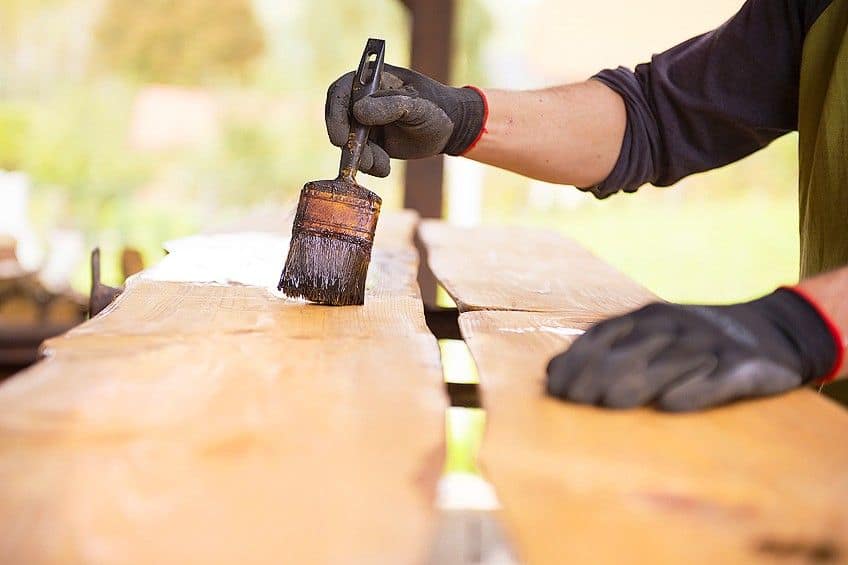
It is for this reason that many who have chosen to stain their rubber wood furnishings avoid darker wood staining solutions as it strongly contrasts with the natural light coloration of rubberwood. Using lighter wood staining solutions crates a better aesthetic appeal as it compliments the natural hue of rubberwood. If staining wood is not your style you can always opt for the much simpler (and less time-consuming) painting option.
Rubberwood actually takes quite well to oil-based paints and primers, which means painting rubberwood with acrylic paint is not only easy, but it will provide the wood with much-needed protection from the elements in colder climates .
If protection is important to you painting your rubberwood furnishings is not your only option, rubberwood can also be varnished which is a good thing considering that it does not have the best resistance to fungi, warping, and rot. You can use an oil-based varnish to protect your rubberwood, although you should keep in mind that varnish takes a while to set and can attract a lot of dust and insects, therefore working in a well-ventilated enclosed environment is recommended.
How Do You Clean Rubberwood Furniture?
Cleaning furniture is nobody’s favorite chore, but it allows our precious possessions to last a bit longer and prevents us from developing dust allergies! As you have likely gathered by now, rubberwood is unique and therefore requires special care when cleaning, or you could end up removing that wonderful glossy finish you spent hours perfecting and swooning over. So, what do we need to keep in mind when we are cleaning our rubberwood furniture?
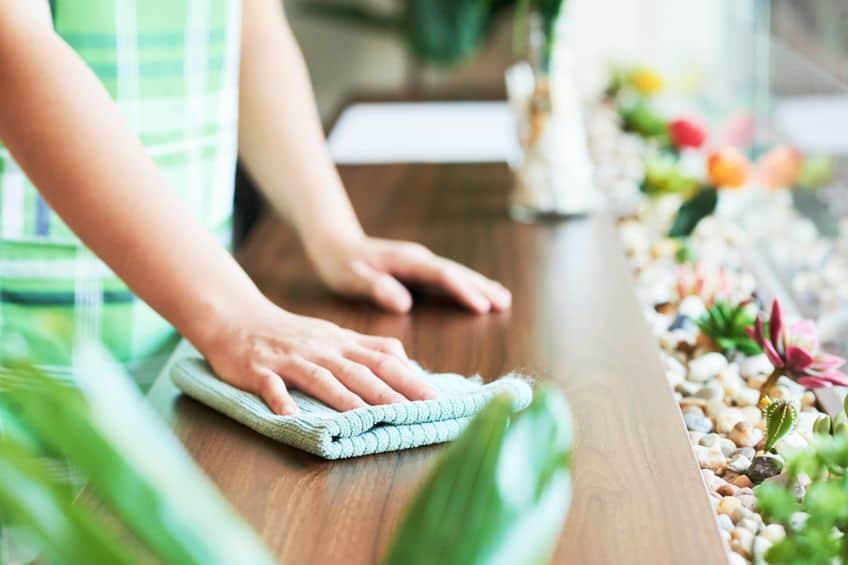
Unlike other woods, you don’t want to get rubberwood soaking when cleaning it. The most commonly agreed-upon way to clean rubberwood is to use lukewarm soapy water, simply submerge a microfibre cloth in you’re the said water, and ring it out once it is nice and moist. You should not use a soaking wet cloth on rubberwood, instead, use the damp lukewarm cloth and make light passes over your furnishings, overlapping every once in a while, to ensure you get complete coverage. When you are done giving it the once over, submerge another cloth in pure room temperature water, ring it out and give your furnishings another once over.
For more stubborn stains or those trying to bring older rubberwood furniture back to life, linseed oil which has been boiled up mixed with turpentine and hot water can get the job done.
This solution works for those spots heat simply will not go away using conventional cleaning products, and what’s more, is that it will seal any hairline cuts you might find in the wood’s surface too. This solution will also provide w mild protective layer, not unlike varnish, which will assist your furnishings in resisting dust and other nasty particles. Other cleaning tips you should keep in mind when working with rubberwood are the use of ammonia to remove alcohol stains and using a warm iron and blotter to remove grease.
Is Rubberwood Toxic?
Rubberwood (also known as parawood) is a highly controversial resource. There are many articles online by various independent publications and wildlife conservationists which cite several sources indicating how rubberwood production methods are not only bad for our atmosphere but how the farming of this material is harmful to wildlife in its indigenous countries.
The problem we face is that industries have been incentivized to farm this resource in large quantities, and as a result, they can often lean towards poor sustainability practices, such as disregarding wildlife species that rely on diverse plant life, and/or the use of chemicals to improve productivity.
This being said, rubberwood in its natural state when allowed to grow at its own pace with no chemical assistance is not toxic to human beings. As we covered previously, those of you who have latex allergies should avoid raw rubberwood and stick to handling slats that have already been kiln dried and processed, however, depending on the chemicals used in the growth process of rubberwood, it can be toxic if the purification process is not followed correctly.
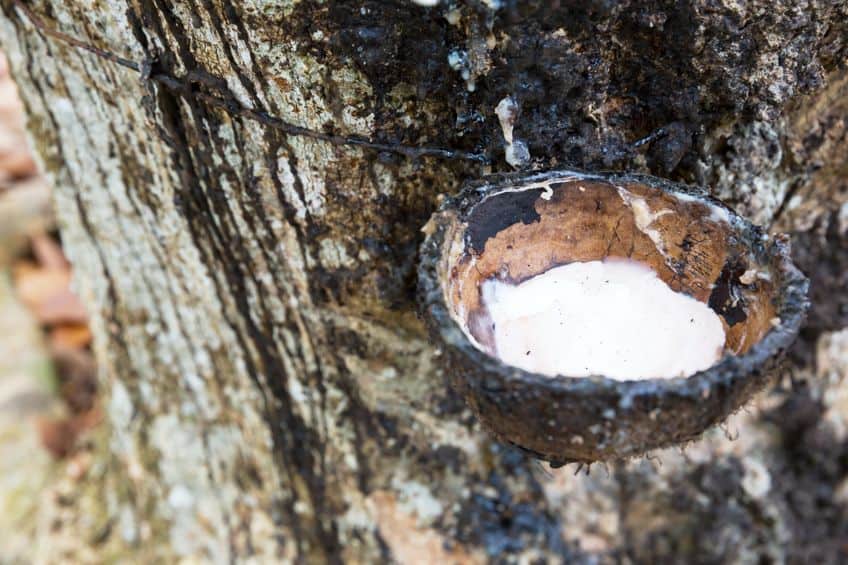
It is for this reason that you should always ensure that your rubberwood supplied is FSC certified, as this allows for a certain level of accountability towards suppliers who do not follow processing and sustainability guidelines. In short, is rubberwood toxic? It can be, but typically it is not.
https://www.youtube.com/watch?v=O0lP2c7g9Xc
Now that you are armed with all of the facts about rubberwood, the rubber tree, rubberwood solids, rubberwood hardness, and the environmental implications of the resource, you can decide whether It is a good choice for your next DIY project or lounge suite. Remember to always check your manufacturer’s FSC certification, and as always, safety first!
Frequently asked Questions
Is Solid Rubberwood Furniture Good Quality?
Contrary to popular belief, rubberwood can be used to make impressive quality furniture. Unlike its name suggests, rubberwood is not super flexible and has a tensile strength on par with other hardwoods in its class. Rubberwood solids include tables, chairs, boutique crafts, beds, shelving, and even flooring.
Can I Sand Rubberwood?
Rubberwood can be sanded before it is stained or varnished to provide some grit for either process. The suggested sanding paper for this type of wood is 120 grit to 150 grit to ensure maximum surface friction. If you have an electronic sander you will be able to use this as well, but since exposed rubberwood can appear soft you should work slowly.
Is Rubberwood Solid?
Despite what its name might suggest, rubberwood is in fact a solid wood. It is named rubberwood due to the latex base that it stores its trunk which can be tapped and processed into latex products and even automobile rubber. Rubberwood hardness is equal to that of maple and pine and can be used in similar applications to the two.

I have been into woodworking since 2005 and woodturning since 2011. Because of my love for wood and woodworking, I started woodhappen.com to teach other enthusiasts about how to finish and seal wood, the best woodworking tools, the different types of wood, and everything else related to woodworking! Read more about me here.

